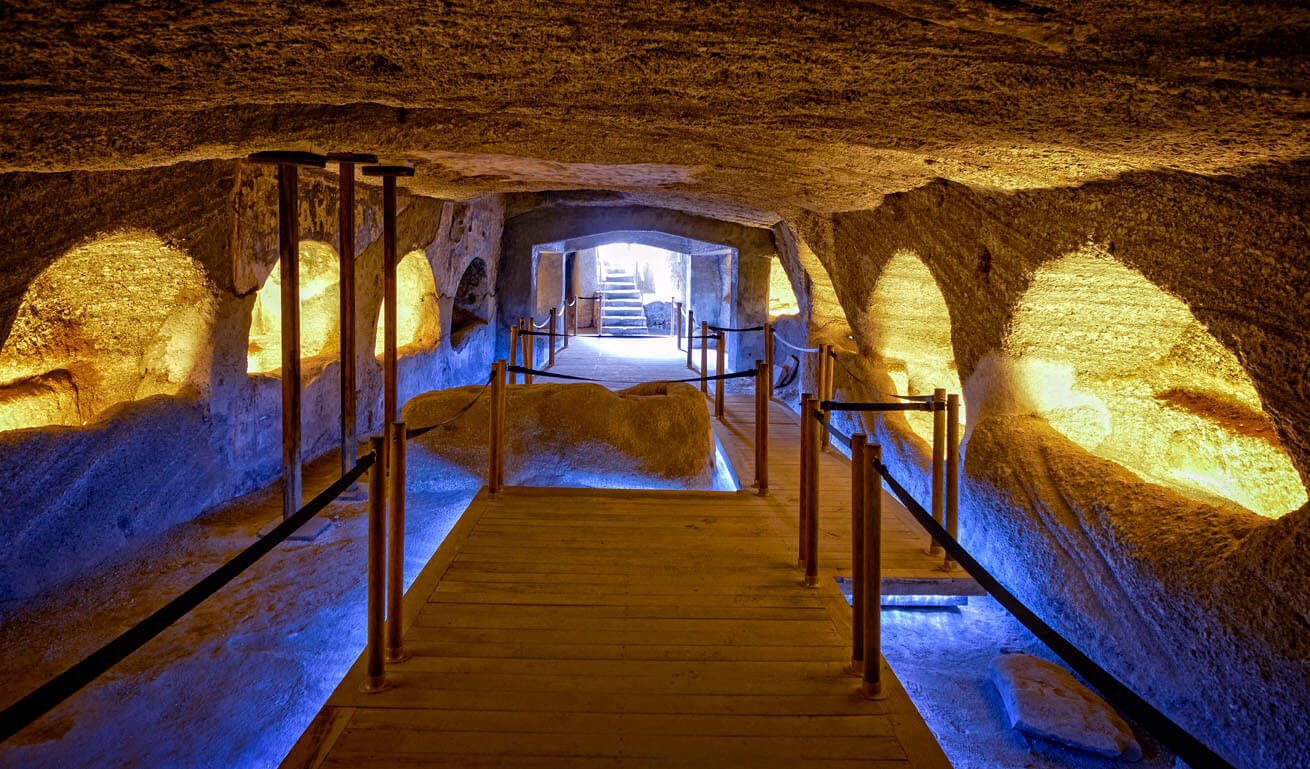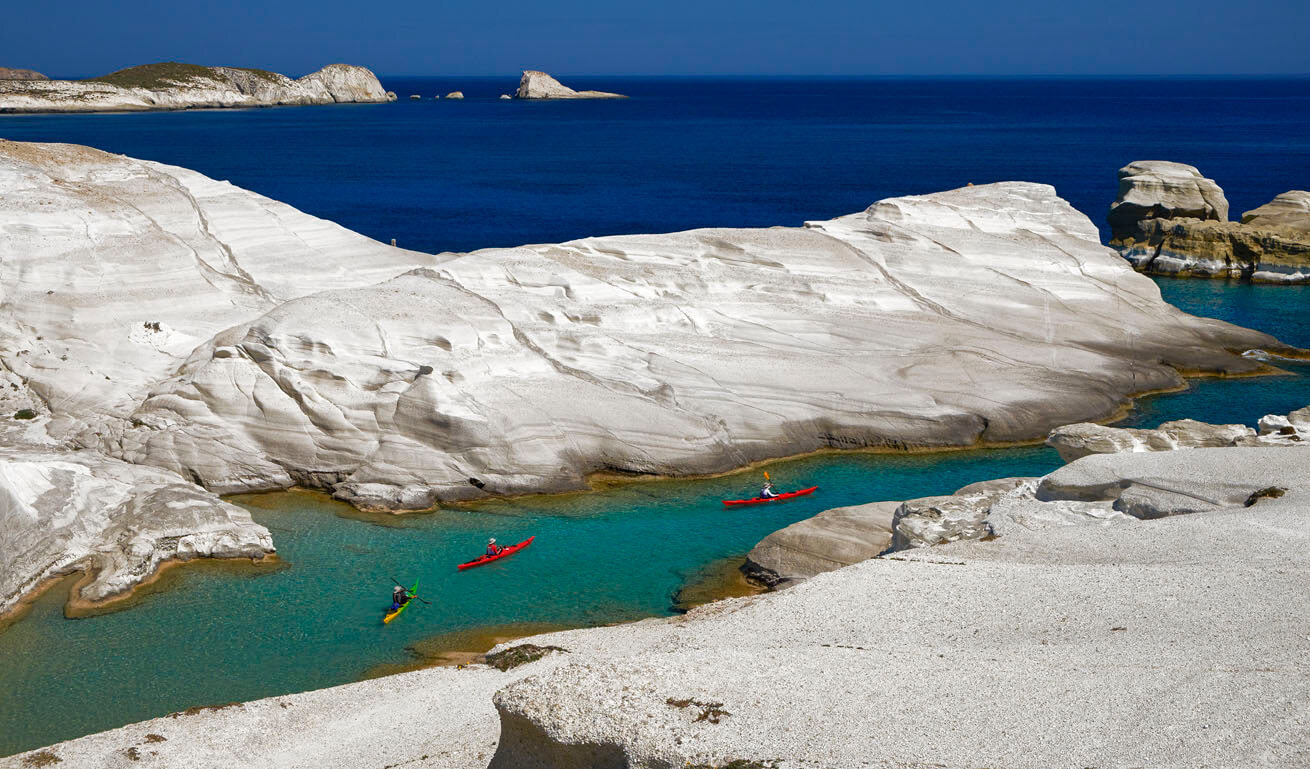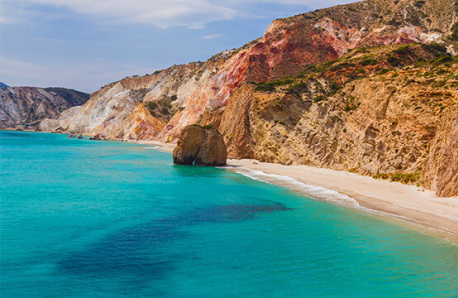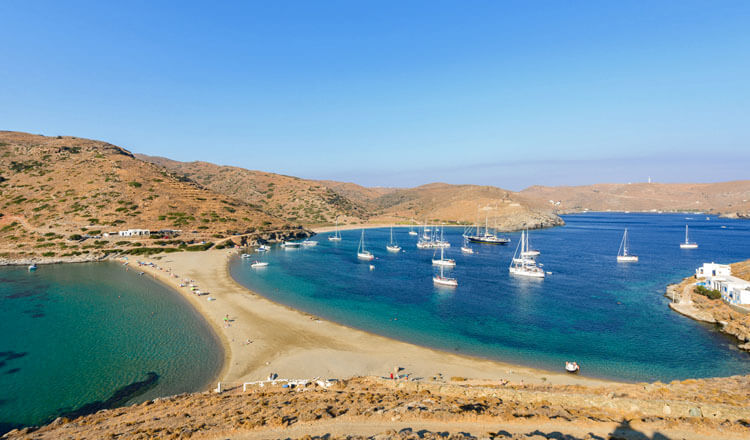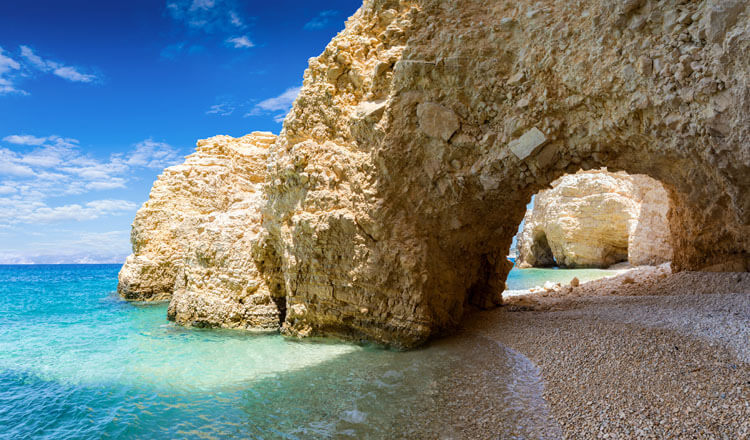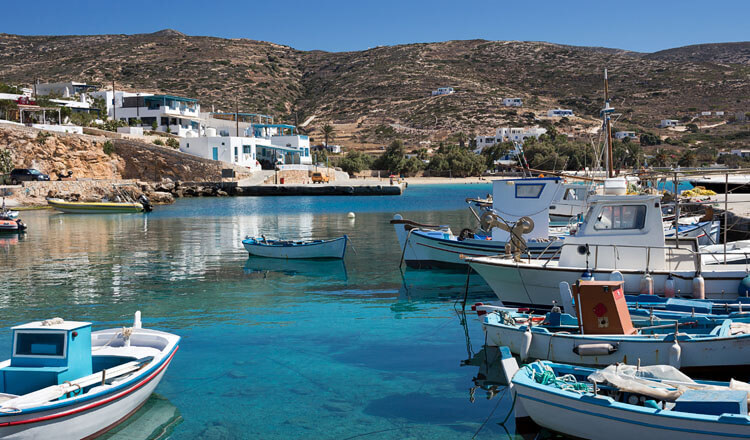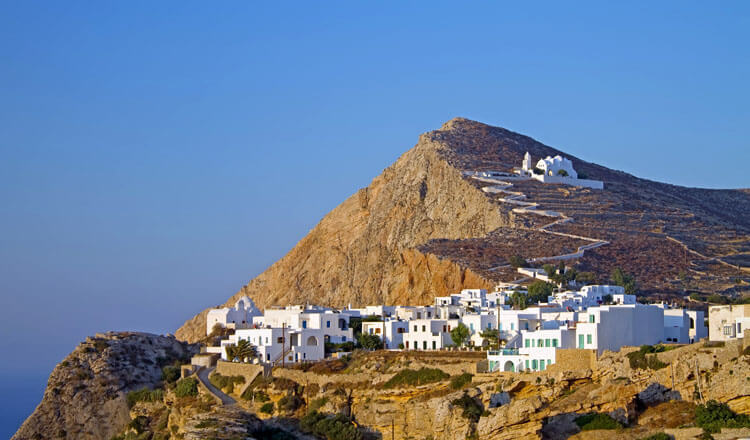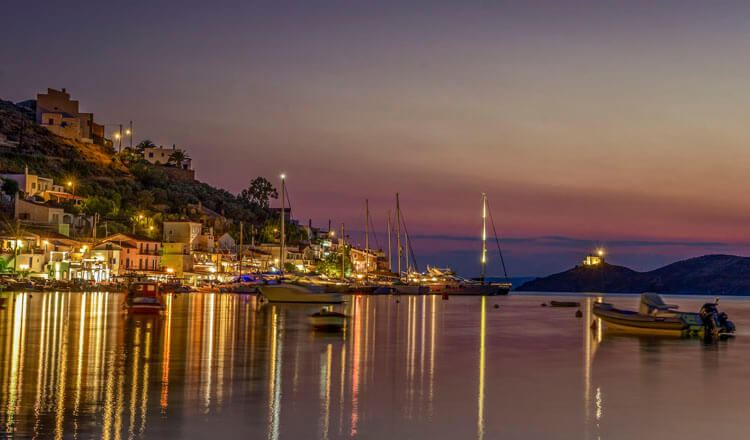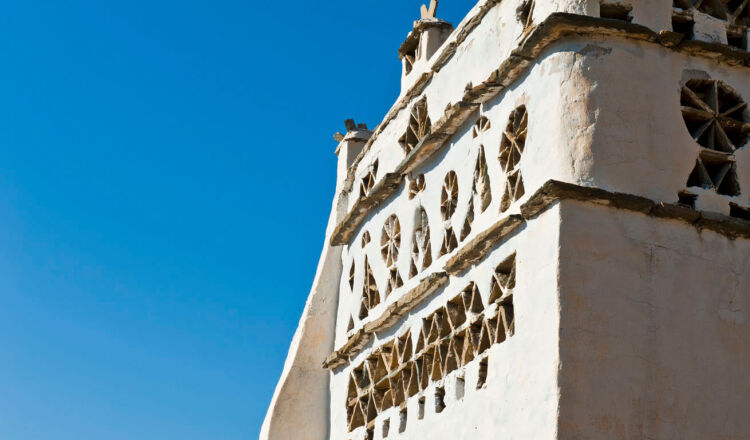Plaka, the capital of Milos, Adamanta one of the biggest natural harbours in the Mediterranean, Pollonia, Chivadolimni or Emporio with the small lagoon and iron mines are just a few of the island’s beautiful villages you should explore. Let the journey begin:
Plaka is built on a hill 220 m above Adamantas Bay. The white washed architectural island style with the charming chapels and narrow alleys makes this town one of the most delightful ones in the Cyclades. At a short distance visit some endearing hamlets such as Firopotamos, Plathiena, Fourkovouni and Klima.
Go by the 13th c. venetian castle-fort for a distinguished view of the sunset. Don't miss the churches of Panagia Schiniotissa (aka Mesa Panagia) and Panagia Thalassitra.
At the Archaeological Museum, housed in a neoclassical building designed by Ernst Ziller, you can see finds from ancient Phylakopi as well as a copy of the renowned statue Venus of Milos. Make a stop by the Folk Art and History Museum, accommodated in a stately building from the 19th c., showcasing traditional artefacts, a collection of minerals and rare old photos of the island.
For an instagrammable shot don’t miss the windmills located over Triovasalo.
Not to be missed are Milos’ moon-like landscape at Sarakiniko with its white smooth rocks.
In the westernmost part of Plaka stop by the main church Panagia Korfiatissa, dating back to the 19th c. See the wood-carved, gilded icon, the wonderful view over the sea and the adorable sunsets.
Visit the catholic church of Panagia Rozaria built in 1823.
Adamandas, 4km SE from Plaka, was built in 1835 by Cretans following the whitewashed island style architecture. Make sure to visit the Mining Museum, which features the island’s mining history. Don’t miss the 17th c. church of Agia Triada in which you will see the Ecclesiastical Museum showcasing iconostasis, epitaphs and icons. At a short distance go for a swim at the beaches Lagakada and Papikinou.
From Adamandas harbour discover the island’s lovely seascape by hopping on a tour boat and heading towards the stunning Kleftiko cove, the most renowned and instagrammable sight of the island, located on the NW side of the island. Also visit Sykia cave, the biggest and most charming one, which can only be explored by small tour boats from Adamantas (Adamantas - Sykia 22 km).
Go by the seaside village of Tripiti, with its cycladic architecture, windmills and beautiful view over the bay.
The little fisherman's village, Klima, with the colourful houses where boats are parked inside during winter is a must visit. Most of the fishermen use the houses during summer as their holiday home. Don’t miss the roman theatre and the Catacombs (1nd to 5th c. A.D.). The latter is considered among the most important early christian cemeteries and worship sites along with the catacombs of Rome and the Holy Land following the persecution of Christians. Over 2000 Christians were buried in the catacombs whose tombs were decorated with plants and symbols. The second chamber known as the Presbyters (elders) is the primary entrance to the catacombs, with a total of the five chambers whose length is estimated at 185m.
Zefyria village has charming alleys and the oldest main church of the island, Panagia Portiani (17th c.). The village used to be the island’s capital but was destroyed by an earthquake in the 18th c. At a 6.5km distance you can visit the old surfur mining area (aka Thiorichia), which operated up to 1956.
Apollonia (aka Pollonia), built on a bay, is a picturesque fisherman village. On the road from Apollonia to Adamanda visit the ancient city of Phylakopi, which prospered during three different periods that represent the phases of the Cycladic civilisation. Go by Papafragka’s, one of the island’s most famous caves. On the opposite side is the group of islands of Glaronisia, that you can reach by boat. Make sure to go on a day trip by boat from Pollonia to the island of Kimolos and enjoy its stunning white beaches.
Provatas is a small hamlet in the southernmost side of the island with a sandy beach.
Chivadolimni is a beautiful area whose name was influenced by a lake (limni in greek) whose bottom was covered with clams (achivades in greek). This is where the oldest church on the island is located, Panagia Kipou, as well as camping grounds. The beach of Chivadolimni is ideal for windsurfing.
The picturesque hamlet of Emporios is located on the west. See the sandy-dry landscape, the old iron mines and the lovely Rivari lagoon.



